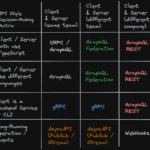TL;DR
Python’s rich ecosystem of libraries and tools makes it a go-to language for developers. From web scraping with Beautiful Soup to database ORM management with SQLAlchemy, this article covers 15 Python packages every developer should know. Learn about tools for web development, data analysis, game design, and even converting screenshots to HTML.
Introduction
Python is renowned for its vast ecosystem of libraries and frameworks that cater to virtually every domain. Whether you’re a data scientist, backend developer, or someone dabbling in game development, there’s a Python package to suit your needs.
This article introduces 15 must-know Python packages, complete with use cases, examples, and tips. From popular libraries like SQLAlchemy to niche tools like Numerizer, let’s dive into Python’s treasure trove of utilities.
1. SQLAlchemy
Use Case: Object Relational Mapping (ORM) for databases.
SQLAlchemy simplifies database interactions by providing an ORM that abstracts SQL queries into Python objects while retaining full control over queries.
Example:
from sqlalchemy import create_engine, Column, Integer, String
from sqlalchemy.ext.declarative import declarative_base
from sqlalchemy.orm import sessionmaker
Base = declarative_base()
class User(Base):
__tablename__ = 'users'
id = Column(Integer, primary_key=True)
name = Column(String)
engine = create_engine('sqlite:///users.db')
Base.metadata.create_all(engine)
Session = sessionmaker(bind=engine)
session = Session()
new_user = User(name="Arion")
session.add(new_user)
session.commit()2. Beautiful Soup
Use Case: Web scraping and HTML/XML parsing.
Beautiful Soup makes it easy to extract data from websites. Always check the website’s robots.txt file to ensure compliance.
Example:
from bs4 import BeautifulSoup
import requests
url = "https://example.com"
response = requests.get(url)
soup = BeautifulSoup(response.text, 'html.parser')
links = [a['href'] for a in soup.find_all('a', href=True)]
print(links)3. SymPy
Use Case: Symbolic mathematics and algebra.
SymPy is a lifesaver for solving algebraic equations and performing symbolic computations.
Example:
from sympy import symbols, solve
x = symbols('x')
equation = x**2 + 2*x - 8
solutions = solve(equation, x)
print(solutions)4. Cookiecutter
Use Case: Project scaffolding.
Cookiecutter generates project templates to speed up development. It’s particularly useful for starting standardized projects.
Example:
pip install cookiecutter
cookiecutter https://github.com/tiangolo/full-stack-fastapi-postgresql5. Pickle
Use Case: Serialize and deserialize Python objects.
Pickle is a standard library module for saving the state of Python objects, but it requires caution due to security risks.
Example:
import pickle
data = {'name': 'Alice', 'age': 25}
with open('data.pkl', 'wb') as f:
pickle.dump(data, f)
with open('data.pkl', 'rb') as f:
loaded_data = pickle.load(f)
print(loaded_data)6. PyGame
Use Case: Game development.
PyGame provides tools to create games with Python. It handles graphics, input, and more.
Example:
import pygame
pygame.init()
screen = pygame.display.set_mode((800, 600))
running = True
while running:
for event in pygame.event.get():
if event.type == pygame.QUIT:
running = False
screen.fill((255, 255, 255))
pygame.display.flip()
pygame.quit()7. Missingno
Use Case: Visualizing missing data in datasets.
Missingno creates simple visualizations to identify gaps in your data.
Example:
import pandas as pd
import missingno as msno
data = pd.DataFrame({
'A': [1, None, 3],
'B': [4, 5, None],
'C': [None, 7, 8],
})
msno.matrix(data)8. Jinja2
Use Case: HTML templating.
Jinja2 is widely used in web development for creating dynamic HTML pages.
Example:
from jinja2 import Template
template = Template("Hello, {{ name }}!")
message = template.render(name="John")
print(message)9. Watchdog
Use Case: File system monitoring.
Watchdog monitors file changes, useful for automation or alerts.
Example:
from watchdog.observers import Observer
from watchdog.events import FileSystemEventHandler
class MyHandler(FileSystemEventHandler):
def on_modified(self, event):
print(f"Modified: {event.src_path}")
observer = Observer()
observer.schedule(MyHandler(), path='.', recursive=False)
observer.start()10. Returns
Use Case: Functional programming with better error handling.
Returns introduces monadic constructs like Result for safer error handling.
Example:
from returns.result import Result, Success, Failure
def divide(a, b) -> Result:
return Failure("Cannot divide by zero") if b == 0 else Success(a / b)
result = divide(10, 0)
if isinstance(result, Failure):
print(result.failure())
else:
print(result.unwrap())11. Numerizer
Use Case: Convert written numbers to numerical values.
Numerizer is useful for NLP tasks where you need to process human-readable text.
Example:
from numerizer import numerize
print(numerize("two thousand and twenty-three"))12. Box
Use Case: Object-like access to dictionaries.
Box allows you to use dot notation for dictionaries.
Example:
from box import Box
data = Box({'city': 'London', 'country': 'UK'})
print(data.city)13. Pipe
Use Case: Functional pipelines for data processing.
Pipe simplifies chaining operations on data.
Example:
from pipe import select, where
numbers = [1, 2, 3, 4, 5]
result = numbers | where(lambda x: x % 2 == 0) | select(lambda x: x * 2)
print(list(result))14. NiceGUI
Use Case: Web-based UI for Python applications.
NiceGUI allows you to create web UIs quickly.
Example:
from nicegui import ui
def increment(value):
return value + 1
ui.label('Counter App')
ui.number().bind(increment)
ui.run()15. Screenshot-to-Code
Use Case: Generate HTML from UI screenshots.
This AI-powered tool converts UI screenshots into HTML/CSS. It’s perfect for designers and developers alike.
Example:
- Upload your screenshot.
- Get HTML/CSS output.
- Modify and integrate into your project.
Conclusion
These 15 Python packages represent a diverse set of tools for various tasks. Whether you’re a data scientist visualizing datasets or a developer creating APIs, Python’s rich library ecosystem has you covered.





Leave a Reply